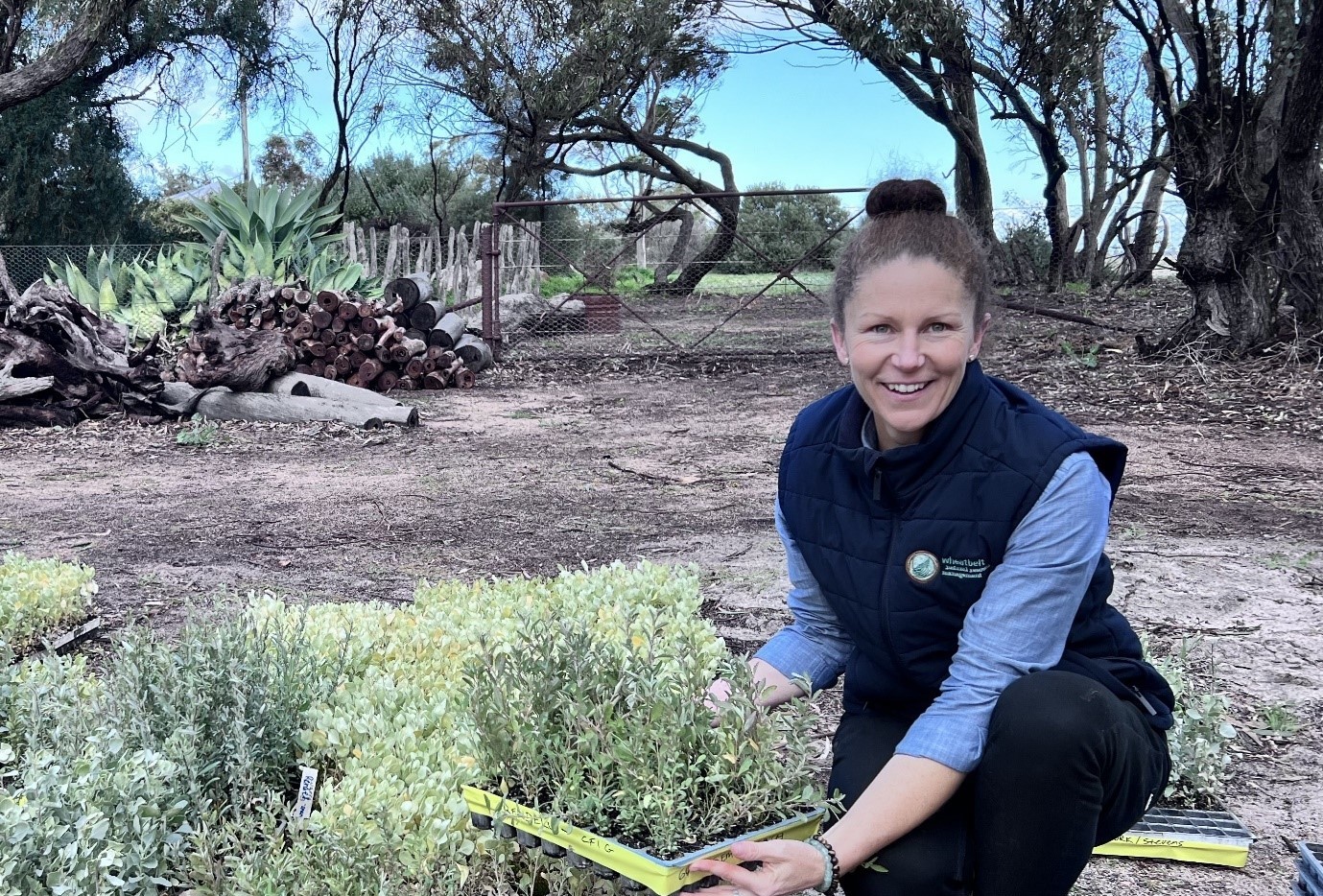The Assessing Saltbush for Carbon Sequestration project, which begun in 2022, has now entered its second year of activity. Infill plantings are currently being completed to make up for plant losses from last year due to animal activity and waterlogging. Overall the establishment of the trial plots has been very good across the 6 sites, with some exceptions, yet showing the ability of the species to withstand very hot and dry conditions if established correctly. Saltbush can withstand a moderate level of salinity but does not cope well with either excessively dry or excessively wet conditions during establishment.
The study has 2 active components:
- Mature saltbush sampling to ascertain the carbon and biomass capability of saltbush in general, and;
- The comparison of carbon sequestration potential between different species of saltbush, different planting densities and mounded or non-mounded plantings.
Saltbush species being assessed in the trial are:
- Atriplex amnicola (River saltbush),
- Atriplex semibaccata (Creeping berry saltbush),
- Atriplex nummularia (Old man saltbush), and anameka (Improved old man saltbush)
Murdoch University researchers are currently undertaking data collection and sampling at 30 mature saltbush sites in the Wheatbelt. This data will go towards a research report due for completion in December 2024, outlining the carbon potential of saltbush in general. The new saltbush plantings have been established at 6 sites within the Facey Group and CFIG region and final data for the new sites will not be collected until the end of the project (2029).
Once the project is completed it is intended to support the hypothesis that Saltbush species can be an effective way to sequester carbon within agricultural lands that have been adversely affected by dryland salinity.
Although the general consensus is that much of the work with tree planting and deep drainage has stabilised dryland salinity in the Wheatbelt, there is also evidence that the issue has not gone away. Salinity is extremely problematic for agricultural soils as once the root zone has been affected by saline groundwater it is unlikely to produce a viable grain crop ever again.
Saltbush plantings have been used for decades by farmers looking to buffer their salt land and salt seeps and provide production benefits. The co-benefits of saltbush plantings include out of season livestock fodder, erosion control, firebreaks for remnant vegetation, nutritional benefits for livestock, and habitat for local flora and fauna. The project aims to develop a recognised methodology within the Australian Credit Unit Scheme (ACCU) for farmers to develop saltbush plantations on their salt affected land to offset farm emissions or get paid a price for stored soil and vegetation carbon.
This will give producers the option to create income producing saltbush corridors that offset carbon and mitigate salinity issues concurrently.
Assessing Saltbush for carbon sequestration project is funded by DPIRDs Carbon Farming and Land Restoration Program.
For more information on this project contact Aimee Ray ARay@wheatbeltnrm.org.au
@faceygroup @corriginfarmimprovementgroup @departmentofprimary industriesandregionaldevelopment @murdochuniversity #saltbushforcarbonmethodology #carbonfarminglandrestorationprogram #carbonnuetralfuture#futurefarms #nativefoddercrops #carbonsequestration


